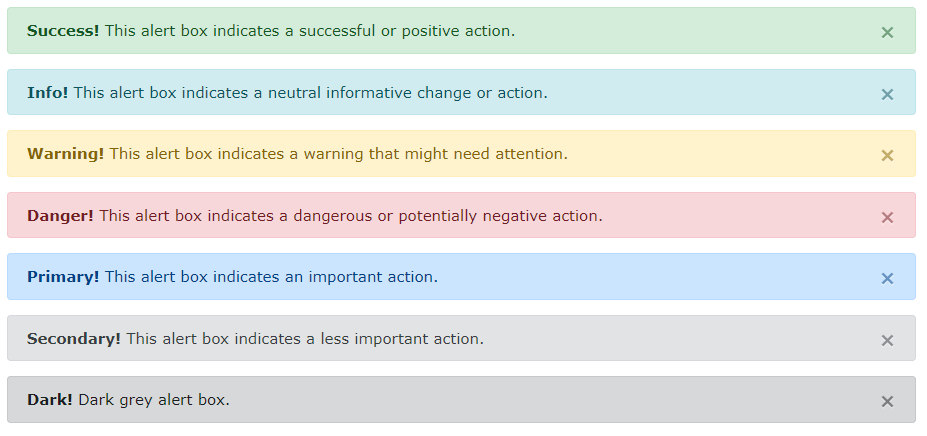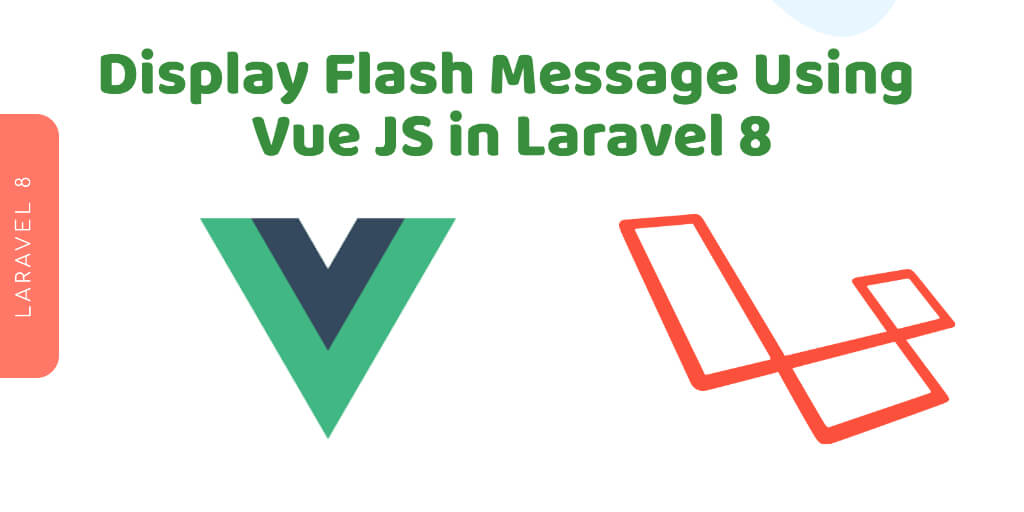Display flash message using vue js in laravel 8 app. In this tutorial, you will learn how to display a flash messages with vue js components in laravel apps.
Many times, you submit a send or submit the form using Vue js. After that, you need to display a flash message like alert, notification, or flash message with Vue js in laravel.
So this tutorial will guide you step by step on how to display flash messages after submitting a form with Vue js in laravel.
The vue js flash message in laravel looks like:

Display Flash Message Using Vue JS in Laravel 8
- Step 1: Install Laravel 8 App
- Step 2: Connecting App to Database
- Step 3: Create Model And Migration
- Step 4: NPM Configuration
- Step 5: Add Routes
- Step 6: Create Controller By Command
- Step 7: Create Vue Component
- Step 8: Register Vue App
- Step 9: Run Development Server
Step 1: Install Laravel 8 App
In this step, you need to install laravel latest application setup, So open your terminal OR command prompt and execute the following command:
composer create-project --prefer-dist laravel/laravel blog
Step 2: Connecting App to Database
After successfully install laravel new application, Go to your project root directory and open .env file. Then set up database credential in .env file as follow:
DB_CONNECTION=mysql DB_HOST=127.0.0.1 DB_PORT=3306 DB_DATABASE=here your database name here DB_USERNAME=here database username here DB_PASSWORD=here database password here
Step 3: Create Model And Migration
Next step, open your terminal and execute the following command:
php artisan make:model Post -m
This command will create one model name post.php and also create one migration file for the posts table.
Now open create_postss_table.php migration file from database>migrations and replace up() function with following code:
<?php
use Illuminate\Support\Facades\Schema;
use Illuminate\Database\Schema\Blueprint;
use Illuminate\Database\Migrations\Migration;
class CreatePostsTable extends Migration
{
/**
* Run the migrations.
*
* @return void
*/
public function up()
{
Schema::create('posts', function (Blueprint $table) {
$table->increments('id');
$table->string('title');
$table->text('description');
$table->timestamps();
});
}
/**
* Reverse the migrations.
*
* @return void
*/
public function down()
{
Schema::dropIfExists('posts');
}
}
Next, migrate the table using the below command:
php artisan migrate
Step 4: NPM Configuration
You need to setup Vue and install Vue dependencies using NPM. So execute the following command on command prompt:
php artisan preset vue
Install all Vue dependencies:
npm install
Step 5: Add Routes
Next step, go to routes folder and open web.php file and add the following routes into your file:
routes/web.php
use App\Http\Controllers\PostController;
Route::get('post', function () {
return view('post');
});
Route::post('store', [PostController::class, 'store']);
Step 6: Create Controller By Command
Next step, open your command prompt and execute the following command to create a controller by an artisan:
php artisan make:controller PostController
After that, go to app\Http\Controllers and open PostController.php file. Then update the following code into your PostController.php file:
<?php
namespace App\Http\Controllers;
use Illuminate\Http\Request;
Use App\Models\Post;
class PostController extends Controller
{
public function store(Request $request)
{
$insert['title'] = $request->get('title');
$insert['description'] = $request->get('description');
$check = Post::insertGetId($insert);
return response()->json($check);
}
}
Step 7: Create Vue Component
Next step, go to resources/assets/js/components folder and create a file called Post.vue.
And update the following code into your Post.vue components file:
<template>
<div class="container">
<div class="row justify-content-center">
<div class="col-md-8">
<div class="card">
<div class="card-header"> Laravel Vue js Flash Message Example </div>
<div class="card-body">
<form @submit="formStore">
<strong> Title:</strong>
<input type="text" class="form-control" v-model="title">
<strong> Description:</strong>
<textarea class="form-control" v-model="description"> </textarea>
<button class="btn btn-success"> Submit</button>
</form>
<strong> Output:</strong>
<pre>
{{output}}
</pre>
</div>
</div>
</div>
</div>
</div>
</template>
<script>
export default {
mounted() {
console.log('Component mounted.')
},
data() {
return {
title: '',
description: '',
output: ''
};
},
methods: {
formStore(e) {
e.preventDefault();
let currentObj = this;
axios.post('/store', {
title: this.title,
description: this.description
})
.then(function (response) {
currentObj.output = response.data;
flash('Post Created Successfully', 'success');
})
.catch(function (error) {
currentObj.output = error;
});
}
}
}
</script>
Next, create a new components named flash.vue and update the following code into flash.vue file:
<template>
<div class="alert alert-success spacing" role="alert" v-show="show">
{{ body }}
</div>
</template>
<script>
export default {
props: ['message'],
data() {
return {
show : false,
body : ''
}
},
created() {
if(this.message) {
this.flash(this.message)
}
window.events.$on('flash',(message) => this.flash(message))
},
methods: {
flash(message) {
this.show = true
this.body = message
setTimeout(() => {
this.hide()
},3000)
},
hide() {
this.show = false
}
}
}
</script>
<style>
.spacing {
position: fixed;
right: 25px;
bottom: 25px;
}
</style>
Now open resources/assets/js/app.js and include the Post.vue and Flash.vue component as follow:
require('./bootstrap');
window.Vue = require('vue');
window.events = new Vue();
window.flash = function(message) {
window.events.$emit('flash',message);
}
Vue.component('post-component', require('./components/Post.vue'));
Vue.component('flash', require('./components/Flash.vue'));
const app = new Vue({
el: '#app'
});
Step 8: Register Vue App
In this step, you need to create a blade view file to define Vue’s app. Go to resources/views folder and make a file named post.blade.php. Then update the below code into post.blade.php file:
<!DOCTYPE html>
<html>
<head>
<meta charset="utf-8">
<meta name="csrf-token" content="{{ csrf_token() }}">
<meta http-equiv="X-UA-Compatible" content="IE=edge">
<meta name="viewport" content="width=device-width, initial-scale=1">
<title>Laravel 8 Vue Flash Message Example - tutsmake.com</title>
<link href="{{asset('css/app.css')}}" rel="stylesheet" type="text/css">
</head>
<body>
<div id="app">
<flash message=""></flash>
<post-component></post-component>
</div>
<script src="{{asset('js/app.js')}}" ></script>
</body>
</html>
Step 9: Run Development Server
Open terminal or cmd and execute the following command to start development server:
npm run dev or npm run watch
Conclusion
In this example tutorial, you have learned how to show a flash message with Vue js in laravel apps.
